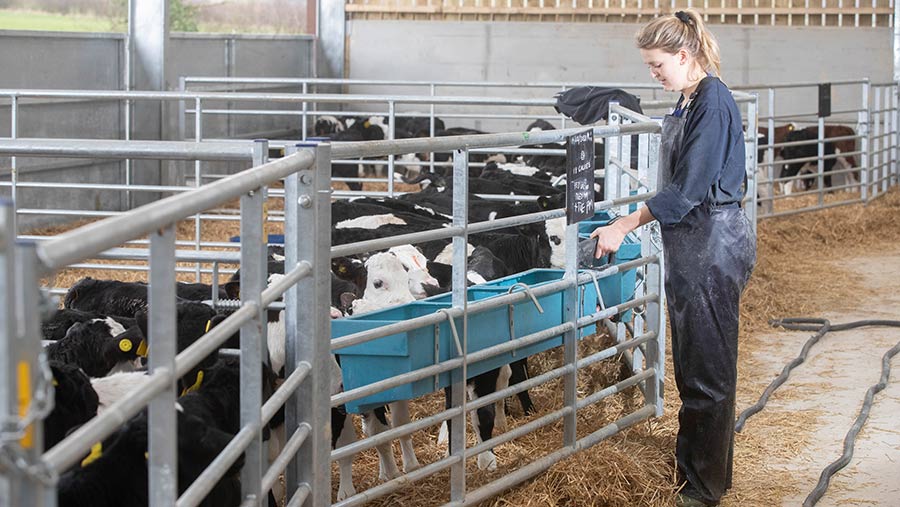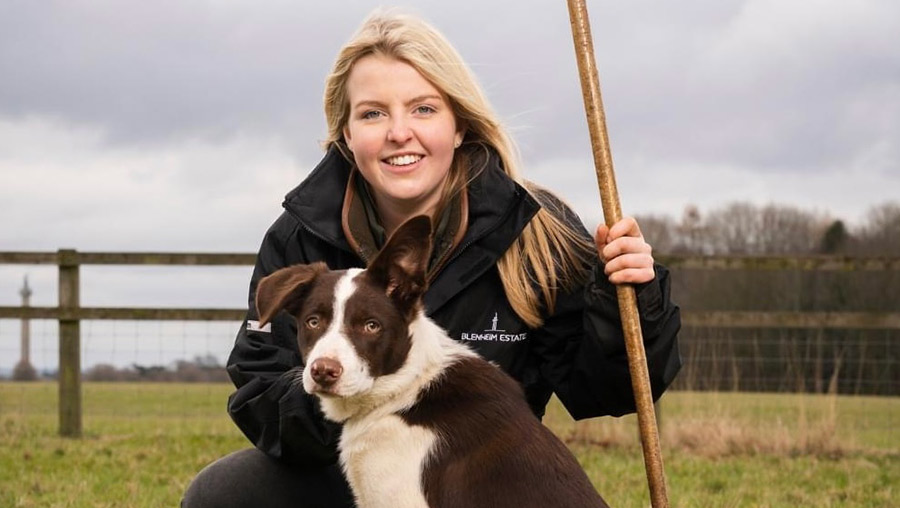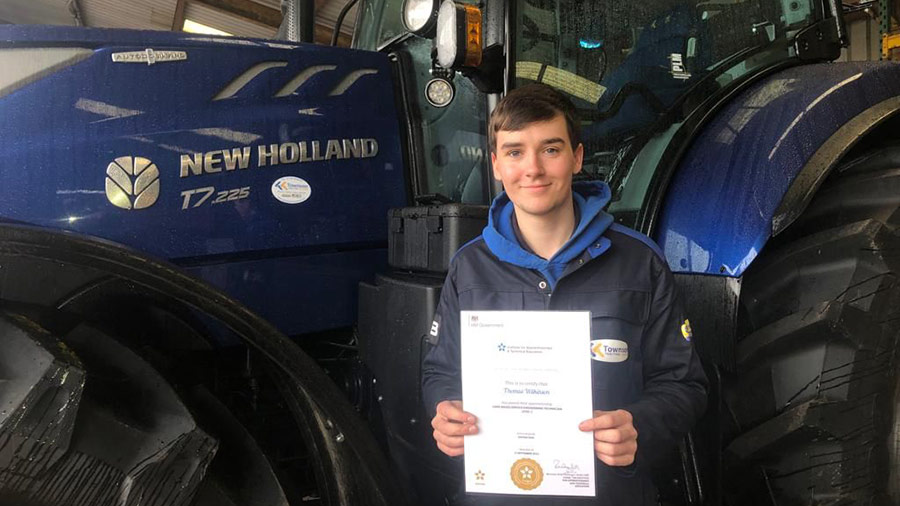What does the future hold for agricultural apprenticeships?
 © Tim Scrivener
© Tim Scrivener Earlier this year, the government-commissioned Independent Review into Labour Shortages in the Food Supply Chain highlighted the importance of apprenticeships as a means of improving the skills of the agricultural workforce.
The review made a number of recommendations for government, industry and other stakeholders, designed to attract more young people to the farming sector.
But it also brought to light the industry’s concerns about the apprenticeship levy – a 0.5% tax on larger employers which is used to fund apprenticeship training
See also: Is an agricultural degree worth doing?
As of July 2022, over £3.3bn of unspent apprenticeship levy funds had been returned, unspent, to the Treasury for general expenditure, despite a growing labour shortage, skills gap, and system that is hindered by a number of shortcomings.
Land-based training body Lantra has this year conducted its own research to identify the main barriers hindering the uptake of apprentices by farming businesses, and has so far carried out interviews with more than 500 farmers.
The organisation’s full research report will not be published until early 2024.
However, initial findings show that, despite almost 70% of farming businesses considering employing an apprentice, about 30% believe that the apprenticeship system is not fit for purpose.
Many of the respondents identified barriers to taking on apprentices, namely unnecessarily high academic requirements, coupled with a lack of competence training.
These were found to prevent new entrants, and mean that when apprentices arrive on farms, they lack the essential skills to begin meaningful work.
Solutions
Roughly half of the surveyed farmers said that, before they would be prepared to take on an apprentice, they would need greater support and for certain barriers to be remedied.
Lantra is therefore developing solutions to “de-risk” the apprenticeship system for both would-be apprentices and employers.
This includes a “how to” guide, which will take employers through the process of hiring an apprentice, simplifying what can be overwhelming to first time employers.
As the industry is dominated by small and micro-businesses, the guide is targeted at helping smaller farms, where staffing is most needed, to bring new employees on board.
The guide will be released in January 2024.
One frequently raised issue highlighted by Lantra’s research is that apprentices are not “farm ready” when they begin work, and often lack the basic practical skills required to make the most of their work placement.
Farming businesses said that apprentices arrived on farm without any vital health and safety training and without certificates of competence to operate key farm machinery, such as tractors, telehandlers, and ATVs, putting further potential risk on the employer.
Director of external relations Corrina Urquhart says:
“We are in the process of completing our research into apprenticeships, having engaged with farming businesses and policymakers, particularly to understand where there is scope to flex the current apprenticeship system.
“Lantra is keen to support farmers through the transition and, while our research shows there is an appetite for on-farm apprentices, there is a need for interventions to maximise uptake and mitigate high drop-out rates.
“A lot of farms are ‘one-man bands’ or a family business, so the burden of employment is something that can be traditionally off-putting.
“Taking on someone so young, fresh out of school or college, can be a big undertaking, particularly when we are looking at businesses that may not have ever employed someone before.
“Farmers have expressed the need for support in this area, if they are to be more willing to take on an apprentice.”
Pathway programme
Apprenticeship systems differ across the nations, and in Scotland, Lantra has had a hand in developing a six-month pre-apprenticeship programme.
A key insight from this pilot revealed that 40% of young people were successful in securing full-time jobs on farms at the end of the six-month period.
The apprentice wanted to get straight into work, and the farm business benefited from a fully trained individual within a shorter period of time.
“The six-month pathway programme into farming works well in Scotland.
“It provides practical experience, training, and knowledge, and enables the new entrant to experience the farm environment and to try out the working environment and relationship,” explains Ms Urquhart.
“At the same time, the employer is also able to work with a potential new employee, while being supported to mentor and develop them, and without the employment risk or the administration burden.”
Are apprenticeships worth doing?
A system in need of such significant restructuring begs the question of how those taking part now are faring, and whether an agricultural apprenticeship is worth doing.
Despite the barriers identified for both apprentice and employer, accounts from current and former apprentices show that this particular avenue of study can provide a vital opportunity for new entrants to access the industry.
It is often the best route for those who prefer to gain hands-on experience, rather than classroom-based learning.

© Blenheim Estate
Opportunities for new entrants
Apprenticeship student Ellie Young has recently completed her end point assessment for her Level 2 Stockperson apprenticeship.
She is based at Blenheim Estate, in Woodstock, Oxfordshire, but has completed the studying element at Sparsholt College in Hampshire.
“I chose to do an apprenticeship after trying a year at college following school,” she explains.
“I didn’t really get on with college very well, so I went down the apprenticeship route and I’ve really enjoyed it because I’ve learned a lot more of the hands-on elements instead of sitting in a classroom full time – it suits me a lot better.
“For my apprenticeship, I had to go to college for one day a week, and the rest is on the farm. I learned a lot more practically and learned it a lot faster,” she adds.
While Ms Young says she did have coursework to do as a part of her one day a week at college, she was able to attain her telehandler, spraying, and ATV tickets at the same time.
“You are learning on the job, and being taught by someone who has had years of experience in a one-to-one environment.
“It’s like having a mentor, and having that style of learning is really helpful,” she says.
“Especially coming from a non-farming background, seeing it hands-on and being shown how it’s done makes it a lot easier for me to learn compared to being stuck in a classroom and still not being sure.”
Earn while you learn

© Tom Wilkinson
Tom Wilkinson has recently completed his Level 2 and Level 3 Land Based Engineering apprenticeship, and has continued to work at Townson Tractors in Skipton, North Yorkshire, after his training.
He was initially drawn to this study route as it provided the opportunity to earn money while learning and gaining qualifications.
“I’ve been at Townson Tractors where I work now for four years, throughout both of my two-year apprenticeship courses,” he explains.
“These worked out as spending a month at work, and then a week at college. It was split in blocks.
“I’d always fancied doing an apprenticeship because I’m not a big fan of being in classrooms – I don’t learn very well that way.
“So being out and actually doing what I wanted to learn really helped, and I liked the fact that you could make money while you learned,” he adds.
Apprentice minimum wage boosted
In the recent Autumn Statement, chancellor of the exchequer Jeremy Hunt announced that the minimum hourly wage for an apprentice will increase by 21% as of April 2024, to £6.40 an hour.
